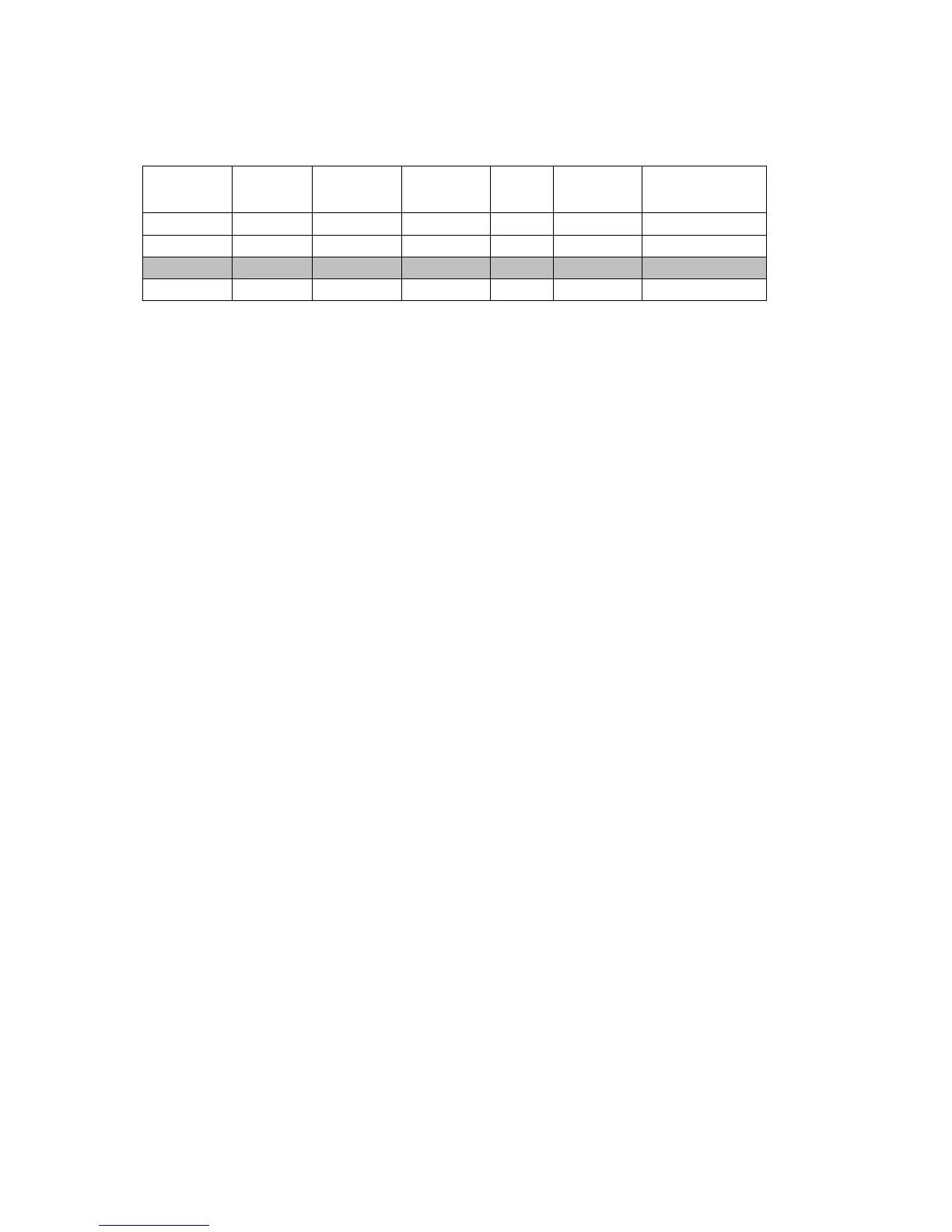112 Preparation for Operation TB7100 Installation and Operation Manual
© Tait Electronics Limited December 2005
Transmitter Audio
The user-defined settings for the transmitter audio IO are shown below.
The cells in grey denote mandatory settings.
7.8.5 Recommended Settings
Recommended settings provide system designers with an extra level of
flexibility to meet a specific operational requirement. In general,
recommended settings should not be changed from the recommended
default value. However unlike mandatory settings, the user is permitted to
make changes, providing they verify the correct operation of the enabled or
modified feature.
No guarantee is given that a feature will work if the recommended settings
disable the feature, or if a recommended value is changed.
Although the individual modules are capable of these features, they cannot
be fully supported by the base station because of its two-module
configuration. A few examples of features that are not fully supported by the
base station are:
■ selcall
■ two tone
■ emergency mode
■ scanning
■ encryption (voice inversion).
The reset to defaults feature in the TB7100 programming application will
ensure all recommended settings are in their recommended default state.
Recommended
Settings Examples
To explain recommended settings more clearly, two Selcall examples are
given below. The first example shows that, although Selcall is not a
supported feature of the base station, systems designers have much more
flexibility to meet a customer’s requirement.
Example One A customer has a requirement to remotely turn on external lighting at the
base station site.
Although Selcall is not a supported feature of the base station, it is likely that
enabling Selcall in the receiver could meet this customer’s requirement.
With Selcall enabled, a control status could be programmed to turn on a
Rx/PTT Type Tap In Tap In Type
Tap In
Unmute
Tap Out
Tap Out
Type
Tap Out Unmute
Rx None A-Bypass In On PTT None D-Split On PTT
Mic PTT None A-Bypass In On PTT None C-Bypass Out On PTT
EPTT1 T8 A-Bypass In On PTT None C-Bypass Out On PTT
EPTT2 None A-Bypass In On PTT None C-Bypass Out On PTT

